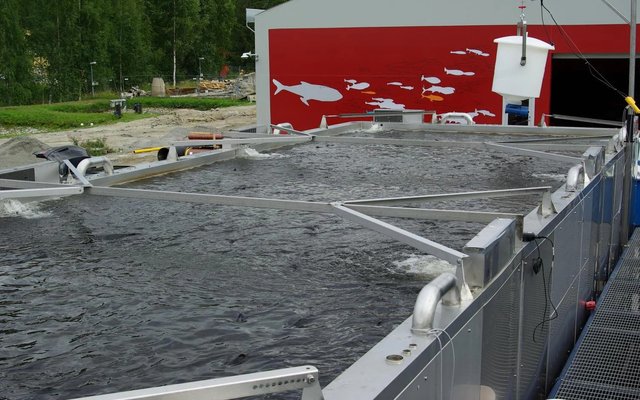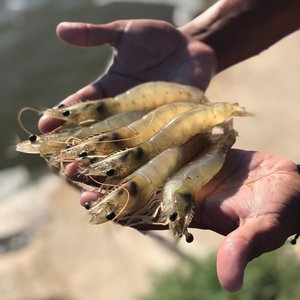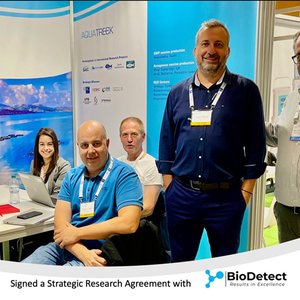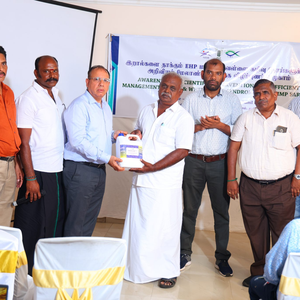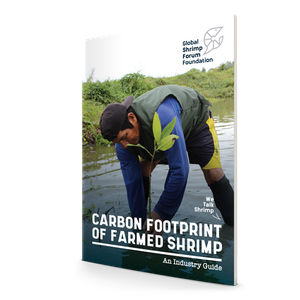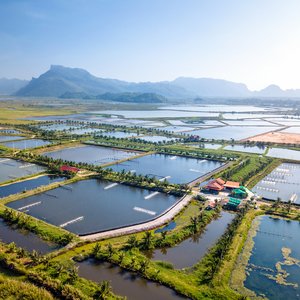The Natural Resources Institute Finland (Luke) has improved its container-based RAS. Looking for energy efficiency improvement and production capacity boost, Luke’s experts developed a Partial Air-driven Recirculation Aquaculture System (PaRAS).
The new concept, the second generation of Luke’s original system of 50 m3, uses a single twelve meters container with two 96m3 tanks that operate a mixed-cell principle with single water treatment cells of 32m3 that can be joined together according to farming needs. Tanks can cover more than 80% of the farm area, as water treatment technology is integrated into the tanks, and no separate fasting tanks are required. The square shape also makes the use of space more effective.
Although the partial recirculation concept uses slightly more water than a recirculation aquaculture system, PaRAS is a simpler and more affordable option compared with traditional RAS.
A three-cell tank with a volume of 96m3 was tested at Luke’s facility in Laukaa during the 2022 farming season and was presented to Finnish fish farmers at the summer event of the Finnish Fish Farmers’ Association on August 24, 2022.
“It was great to see how interested the visitors were in this technology,” said Tapio Kiuru, principal specialist at Luke. “We are only at the halfway point, but it already seems that the project will continue and our cooperation will expand. Measured data can only be obtained after the trials conducted during the 2022 farming season, but we have already seen during the first part of the experiment that the maximum feeding in the 96m3 PaRAS system is much higher than 100 kg per day. If operated round the year, the annual production of a tank of this size could easily be around 25 tonnes, which is significantly higher than the production capacity of current recirculation farms relative to the tank volume.”
The new concept requires fewer investment and operating costs since PaRAS does not have bioreactors. Aeration, flow systems, and solids removal systems are tank-specific, allowing PaRAS tank units to be isolated from centralized biofiltration at any time without any impact on feeding or production.
However, if the customer operates with RAS, new PaRAS tanks can be connected to the bioreactor, with the advantage that, if a PaRAS unit needs to be isolated from the central, it can be switched to partial recirculation. “When new fish are brought to a farm, a tank can run on partial recirculation separate from the rest of the farm, until the health of the new fish group has been ensured,” researchers said.


